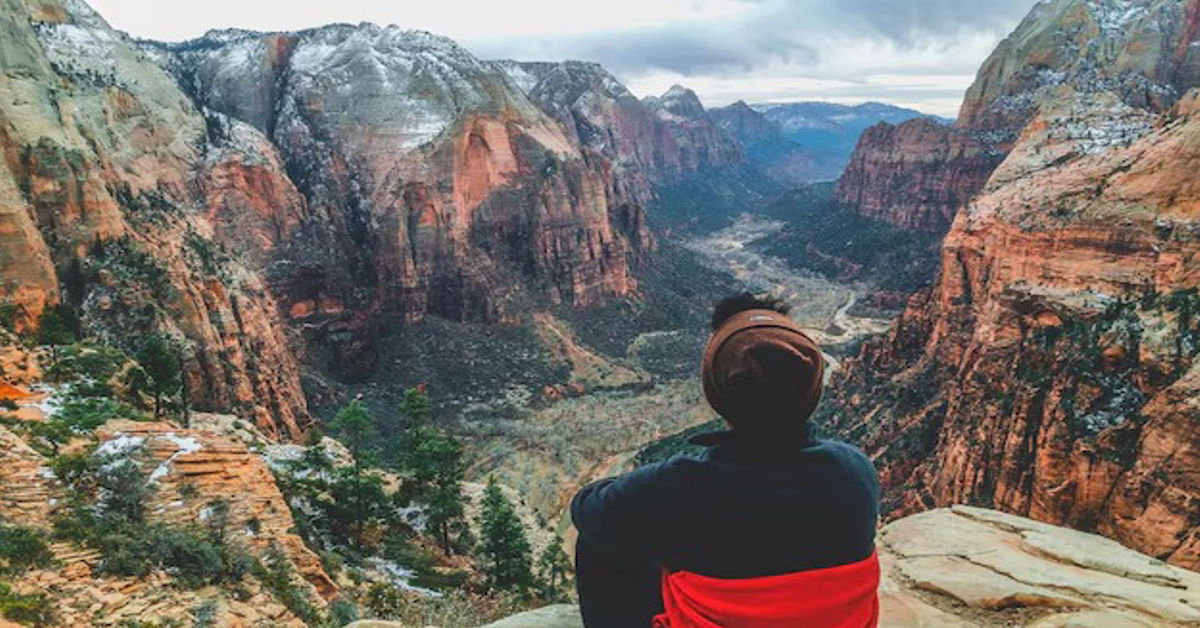When people think of the United States, images of bustling cities, cultural diversity and technological innovation often come to mind. Yet, hidden within this vast country is another identity—one shaped by wild landscapes, towering mountains, deep canyons, ancient forests, and untouched wilderness. These wonders are protected under the national park system, which preserves the country’s most remarkable Best National Parks to Visit in the US natural and cultural heritage.
Visiting the best national parks to visit in the US is not just about sightseeing. It is about experiencing freedom, slowing down, and connecting to places where time feels eternal. Each park offers a unique story—some speak of volcanic eruptions and shifting glaciers, while others tell tales of indigenous heritage, wildlife migration, and rivers carving through rock for millions of years. For families, solo adventurers, or seasoned travelers, these parks serve as gateways into a deeper appreciation of nature.
Before we dive into the details of specific parks, let’s first understand what makes them truly special, how they differ from one another, and what travelers should keep in mind when choosing the right park for their journey.
The Essence of National Parks: Why They Matter
National parks are often referred to as “America’s best idea,” and for good reason. They protect fragile ecosystems, preserve cultural landmarks, and provide access to natural wonders for everyone. Unlike private resorts or commercial attractions, national parks are public lands that belong to all.
When planning a trip, visitors often wonder which park is right for them. Should they choose the iconic Grand Canyon, where vast desert meets sky? Or would they prefer the coastal beauty of Acadia, where the Atlantic Ocean greets the sunrise first in the nation? Understanding these differences can help travelers make informed choices that align with their interests and travel style.
Categories of National Park Experiences
Before selecting a destination, it helps to think about what kind of experience you want. Some parks are perfect for hiking and adventure, while others are ideal for peaceful drives or cultural exploration.
| Category | Parks That Represent It | What to Expect |
| Adventure & Hiking | Zion, Yosemite, Glacier | Challenging trails, mountain summits, canyon hikes |
| Scenic Drives | Grand Canyon, Rocky Mountain, Going-to-the-Sun Road (Glacier) | Iconic highways with breathtaking views |
| Wildlife Encounters | Yellowstone, Denali, Everglades | Bison, wolves, grizzlies, moose, bird migrations |
| Coastal Beauty | Acadia, Olympic, Channel Islands | Ocean views, tide pools, kayaking |
| Unique Geology | Arches, Bryce Canyon, Death Valley | Rock formations, hoodoos, desert landscapes |
| Family-Friendly | Great Smoky Mountains, Sequoia, Yosemite | Easy trails, camping, educational programs |
This categorization shows that there is no single “best” park—each serves a different purpose. Families may prioritize safety and accessibility, while adventure seekers crave adrenaline-filled trails. By identifying your preferred experience, you can narrow down which parks fit your journey best.
In many ways, this variety is the true beauty of the US park system. Whether you want to climb, camp, drive, or simply sit quietly in awe, there is a national park that feels like it was created just for you.
Preparing for Your Journey: Essential Travel Tips
National parks can be both awe-inspiring and challenging. Unlike city vacations where restaurants and shops are always nearby, visiting these wild landscapes requires planning and preparation. Weather conditions can change quickly, wildlife encounters may occur, and remote locations often mean limited cell service.
Travelers should prepare by packing essential gear such as hiking boots, layered clothing, maps, and plenty of water. Booking accommodations in advance is also critical since many parks have limited lodging that fills up quickly. Understanding your park’s seasonal patterns—whether roads are open, trails are snow-free, or campgrounds are available—makes the difference between a smooth trip and a frustrating one.
Practical Travel Checklist for National Park Visitors
| Category | What to Bring | Why It Matters |
| Navigation | Paper maps, GPS | Cell service is often unreliable in parks |
| Clothing | Layered outfits, rain gear | Weather can shift dramatically |
| Food & Water | Refillable bottles, snacks, cooler | Limited food options inside most parks |
| Safety | First aid kit, bear spray (where needed) | Ensures preparedness in emergencies |
| Permits & Passes | Park pass, campsite booking, backcountry permits | Many areas require advance reservations |
| Photography | Camera, tripod | To capture landscapes and wildlife |
A checklist ensures you won’t forget crucial items, and being prepared allows you to focus on enjoying the experience instead of scrambling for supplies. Parks like Yellowstone or Glacier, for example, cover massive areas where services may be hours away. Similarly, visiting deserts such as Death Valley requires carrying ample water. Proper planning not only enhances comfort but also keeps travelers safe.
By combining gear, preparation, and awareness, you can transform your trip into a stress-free adventure where nature, not logistics, takes center stage.
Diving Into the Parks: The Icons of the US
Now that we’ve set the stage with categories, comparisons, and preparation, it’s time to journey through the crown jewels of the US national park system. Each of the following destinations is celebrated for its unique character and timeless beauty. From geysers to glaciers, canyons to coastlines, here are the best national parks to visit in the US:
Yellowstone National Park
Yellowstone, located mostly in Wyoming but stretching into Montana and Idaho, holds the honor of being the first national park in the world. It is renowned for its geothermal features, such as Old Faithful geyser and the Grand Prismatic Spring, which dazzle visitors with eruptions and rainbow-colored waters. Wildlife thrives here: massive bison herds roam freely, grizzly bears wander valleys, and wolves howl across Lamar Valley. Beyond geothermal wonders, Yellowstone boasts waterfalls, rivers, and over 900 miles of hiking trails. Camping under the stars here offers a glimpse into a world where wilderness still dominates. More than a park, Yellowstone is a living laboratory of nature and a must-visit destination for those seeking adventure and discovery.
Yosemite National Park
Yosemite in California is synonymous with towering granite cliffs and breathtaking waterfalls. El Capitan and Half Dome dominate the skyline, drawing climbers and photographers from across the globe. Yosemite Valley is a picture-perfect setting where Yosemite Falls, Bridalveil Fall, and lush meadows create a scene that feels timeless. Visitors can explore giant sequoia groves, high-altitude lakes, and quiet backcountry trails. For many, Yosemite represents the soul of the American wilderness. Its combination of accessibility and awe-inspiring landscapes makes it a favorite for families, adventurers, and those seeking unforgettable photographs.
Grand Canyon National Park
The Grand Canyon in Arizona is one of Earth’s most extraordinary natural wonders. Carved by the Colorado River over millions of years, its vast expanse reveals layers of rock that tell the planet’s geological history. Standing on the rim offers breathtaking views, but venturing inside the canyon reveals an entirely new world. Trails like Bright Angel and South Kaibab challenge hikers with their steep descents, while mule rides and rafting provide alternative adventures. The South Rim is more accessible and popular, while the North Rim offers solitude and cooler weather. No matter how you experience it, the Grand Canyon is humbling, unforgettable, and a highlight among the best national parks to visit in the US.
Zion National Park
Zion in Utah captures the imagination with its towering sandstone cliffs and thrilling hikes. The Narrows, where visitors wade through the Virgin River between canyon walls, is one of the most unique hikes in the world. Angels Landing, though strenuous and not for the faint of heart, rewards hikers with spectacular views. Beyond adrenaline, Zion offers gentle walks, scenic drives, and lush valleys. Its accessibility and variety make it a favorite for both beginners and experienced adventurers. The combination of desert beauty and towering cliffs gives Zion a sense of grandeur unlike any other.
Glacier National Park
Glacier National Park in Montana is often called the “Crown of the Continent,” and for good reason. It features rugged mountains, crystal-clear lakes, and alpine meadows. The Going-to-the-Sun Road is a breathtaking drive that winds through the park, offering panoramic views at every turn. Wildlife thrives here—grizzly bears, mountain goats, and moose are often spotted. Summer reveals colorful wildflowers across its valleys, while winter blankets peaks in snow. For hikers, over 700 miles of trails lead to hidden waterfalls and high-altitude vistas. Glacier offers both solitude and adventure, making it one of the most captivating parks in the country.
Acadia National Park
On the coast of Maine, Acadia National Park blends rugged Atlantic shoreline with forested mountains. Cadillac Mountain, the highest point on the US East Coast, is a popular spot for sunrise, often making visitors among the first to see daylight in America. Scenic carriage roads designed by philanthropist John D. Rockefeller provide unique biking and walking routes through forests and lakes. The park is also a haven for birdwatchers, kayakers, and families seeking coastal exploration. With its mix of mountain hikes and ocean views, Acadia is a refreshing contrast to inland parks, showcasing the beauty of America’s coastlines.
Olympic National Park
Olympic National Park in Washington offers an incredible diversity of landscapes within one region. Visitors can walk through the moss-draped Hoh Rain Forest, hike in the Olympic Mountains, and stroll along wild Pacific beaches—all in the same day. The park is recognized as a UNESCO World Heritage Site due to its ecological importance. Wildlife ranges from black bears in the forests to sea otters along the coast. This combination of ecosystems makes Olympic feel like three parks in one, offering something for every traveler. Its raw, natural beauty makes it an unforgettable destination.
Grand Teton National Park
Grand Teton National Park in Wyoming showcases one of the most dramatic mountain ranges in North America. The jagged Teton Range rises sharply above the valley, creating stunning reflections in lakes like Jenny and Jackson. Wildlife is abundant—moose, elk, bison, and bald eagles thrive in this environment. Visitors can hike trails ranging from easy lakeside walks to challenging alpine climbs. Photographers find endless inspiration in the park’s sunrises and sunsets. For those seeking wilderness paired with accessibility, Grand Teton delivers both beauty and adventure.
Great Smoky Mountains National Park
The Great Smoky Mountains, straddling Tennessee and North Carolina, hold the title of the most visited national park in the US. Known for their mist-shrouded peaks, the Smokies are home to diverse ecosystems with over 19,000 documented species of plants and animals. Historic cabins and grist mills preserve Appalachian culture, while hundreds of miles of trails lead to waterfalls and scenic overlooks. The park’s accessibility and variety make it perfect for families and road trips. In spring, wildflowers cover the valleys, while autumn transforms the landscape into a tapestry of colors.
Rocky Mountain National Park
Colorado’s Rocky Mountain National Park brings visitors face-to-face with alpine grandeur. Towering peaks, alpine tundra, and glacial lakes define the landscape. Trail Ridge Road, the highest continuous paved road in North America, provides sweeping views from above 12,000 feet. Wildlife sightings include elk, marmots, and bighorn sheep. The park offers year-round adventure: hiking in summer, leaf-peeping in fall, and snowshoeing in winter. Its accessibility from Denver makes it one of the most popular national parks for quick getaways.
Arches National Park
Arches National Park in Utah is home to more than 2,000 natural sandstone arches. The most famous, Delicate Arch, has become a symbol of the state. Balanced Rock and the Fiery Furnace add to the park’s surreal beauty. Hiking trails range from short, family-friendly paths to challenging treks into remote formations. The red rock landscape glows at sunrise and sunset, creating unforgettable photography opportunities. With its otherworldly scenery, Arches feels like stepping onto another planet.
Bryce Canyon National Park
Bryce Canyon also in Utah is celebrated for its hoodoos—towering spires of red rock shaped by erosion. The Bryce Amphitheater is a breathtaking sight, best viewed at sunrise when the rocks glow with color. Trails like the Navajo Loop and Queen’s Garden allow visitors to walk among the hoodoos. At night, Bryce offers some of the darkest skies in the country, making it perfect for stargazing. Its unique geology and high elevation make it one of the most fascinating parks in the system.
Denali National Park
Denali in Alaska is dominated by its namesake peak, the tallest in North America at 20,310 feet. Covering six million acres of wilderness, the park offers a sense of untouched majesty. Wildlife thrives here—grizzly bears, caribou, moose, and wolves roam freely. Visitors often explore via guided bus tours, hiking, or mountaineering expeditions. The sheer size and isolation of Denali provide a sense of wilderness that few other parks can match. For those seeking raw nature and solitude, Denali is a once-in-a-lifetime destination.
Death Valley National Park
Death Valley, straddling California and Nevada, is known as the hottest and driest place in North America. Its landscapes are surprisingly diverse, from salt flats at Badwater Basin (the lowest point on the continent) to sand dunes, canyons, and colorful badlands. Despite its harsh reputation, spring can bring fields of wildflowers after rare rains. Zabriskie Point and Dante’s View offer iconic sunrise and sunset vistas. Death Valley challenges perceptions and rewards travelers with some of the most dramatic desert scenery in the world.
Sequoia National Park
Sequoia National Park in California is home to the world’s largest trees. The General Sherman Tree, by volume the largest living tree on Earth, inspires awe in all who stand beneath it Best National Parks to Visit in the US. Beyond its giant sequoia groves, the park offers caves, mountains, and wilderness trails. Walking through the Giant Forest feels like entering a natural cathedral, where trees have stood for thousands of years. Sequoia reminds us of the resilience of nature and the importance of protecting it for future generations.
Comparison Table of Top National Parks
| Park | Landscape Type | Famous Features | Best Time to Visit | Ideal For |
| Yellowstone | Geothermal & wilderness | Old Faithful, bison, Grand Prismatic Spring | Summer, early fall | Wildlife lovers, families |
| Yosemite | Granite cliffs & waterfalls | El Capitan, Half Dome, Yosemite Falls | Spring | Climbers, photographers |
| Grand Canyon | Desert canyon | Vast gorge, Colorado River | Spring, fall | First-time visitors, hikers |
| Zion | Sandstone canyons | The Narrows, Angels Landing | Spring, fall | Adventurers, hikers |
| Glacier | Alpine wilderness | Going-to-the-Sun Road, Lake McDonald | Summer | Road trippers, hikers |
| Acadia | Coastal mountains | Cadillac Mountain, rocky shorelines | Fall | Families, sunrise seekers |
| Olympic | Rainforest, coast, mountains | Hoh Rain Forest, rugged beaches | Summer | Explorers, photographers |
| Grand Teton | Mountain range & lakes | Jenny Lake, Teton Range | Summer | Mountaineers, photographers |
| Smoky Mountains | Forested peaks | Appalachian heritage, wildflowers | Spring, fall | Families, road trips |
| Rocky Mountain | High alpine | Trail Ridge Road, alpine lakes | Summer, fall | Hikers, skiers |
| Arches | Desert rock formations | Delicate Arch, Balanced Rock | Spring, fall | Families, photographers |
| Bryce Canyon | Hoodoo formations | Bryce Amphitheater | Summer, fall | Stargazers, hikers |
| Denali | Arctic wilderness | Mount Denali, wildlife | Summer | Solitude seekers, adventurers |
| Death Valley | Desert extremes | Badwater Basin, Zabriskie Point | Winter, spring | Adventurers, photographers |
| Sequoia | Giant forest | General Sherman Tree | Summer, fall | Families, nature lovers |
This table helps travelers quickly assess which parks fit their travel style. Those seeking desert adventures may choose Arches, Bryce, or Death Valley, while lovers of alpine scenery might prefer Glacier or Rocky Mountain. Families may lean toward Yosemite, Sequoia or the Smoky Mountains for accessibility and variety.
Conclusion: Choosing Your Adventure
The best national parks to visit in the US offer not only landscapes but also life-changing experiences. Whether you stand before the vast expanse of the Grand Canyon, hike among ancient sequoias, or witness geysers erupting in Yellowstone, each visit is a reminder of nature’s power and beauty. Choosing a park comes down to understanding your travel goals—adventure, relaxation, photography, or family time—and matching them with the right destination.
Best National Parks to Visit in the US remind us that beauty does not always require luxury. Sometimes, the most valuable memories come from standing under a starlit sky, hearing the rustle of wildlife, or feeling humbled by mountains older than human history. For anyone seeking Best National Parks to Visit in the US inspiration, wonder, and peace, these parks are not just places to visit—they are destinations that stay with you forever.
Frequently Asked Questions
What is the most visited national park in the US?
The Great Smoky Mountains National Park is the most visited, attracting millions of visitors each year due to its accessibility and scenic beauty.
Which national park is best for hiking?
Zion, Yosemite, and Glacier are considered top choices for hikers due to their variety of trails and dramatic landscapes.
What is the best time to visit US national parks?
Spring and fall are generally ideal because of mild weather and fewer crowds, but the best time varies depending on the park.
Which park is best for wildlife viewing?
Yellowstone and Denali are excellent for spotting diverse wildlife, including bears, bison, and moose.
How many national parks are there in the US?
There are 63 designated national parks, with over 400 protected areas managed by the National Park Service.







